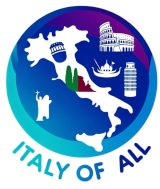The province of Forlì-Cesena, situated in the Emilia-Romagna region of northern Italy, offers a diverse landscape that includes the rich agricultural plains of the Po Valley and the rugged hills of the Apennine mountains. This area is rich in history, cultural traditions, and economic development, making it a vibrant part of Italy.
Geographically, Forlì-Cesena spans from the flat, fertile lands of the valley—ideal for agriculture—to the scenic hills and parks in the east, providing picturesque settings and outdoor recreational opportunities. The region benefits from this varied terrain, which supports a variety of crops and vineyards, particularly known for Sangiovese wine.
Historically, the area is steeped in a rich tapestry of events, from its days under Roman influence to significant developments during the Renaissance. Key historical sites in the province include the Malatestiana Library, the first European civic library and a UNESCO World Heritage site, and numerous medieval castles and fortresses that dot the landscape, particularly in the hillier parts of Cesena and its surroundings.
Culturally, Forlì-Cesena has a vibrant local culture with deep roots in the Italian Renaissance, reflected in its art, architecture, and local customs. The area is known for its annual festivals, including the Cesena Fiera di San Giovanni, which features historical reenactments, traditional music, and local crafts. The region also hosts modern events, such as the International Street Food Festival in Forlì, showcasing the province’s dynamic culinary scene.
Cuisine in Forlì-Cesena mirrors the richness of its agricultural production, featuring a diet heavy in fruits, vegetables, cereals, and meats. Local specialties include “piadina,” a flatbread that is a staple of the Romagna region’s diet, often filled with cheeses, cold cuts, or vegetables. The area is also renowned for its extra virgin olive oil and fruit preserves.
Economically, Forlì-Cesena benefits from a well-developed agricultural sector, with an emphasis on fruit and vegetable production. The province also has a strong industrial presence, particularly in manufacturing, which includes everything from food processing to high-tech industries. Tourism is increasingly important, driven by both the natural beauty of the Apennines and the historical attractions of the cities and towns.
Despite facing challenges such as economic shifts and the need for infrastructural improvements, Forlì-Cesena is actively working towards enhancing its economic resilience. Initiatives to promote sustainable tourism and protect its rich cultural heritage are central to the province’s strategy for growth.
Overall, the province of Forlì-Cesena offers a rich blend of history, culture, and natural beauty. Its ongoing efforts to balance sustainable development with the preservation of its unique heritage ensure a promising future for its residents and continue to attract visitors from around the world.
Comuni in Forlì-Cesena Province:
- Bertinoro
- Borghi
- Bagno di Romagna
- Castrocaro Terme e Terra del Sole
- Dovadola
- Cesenatico
- Forlì
- Cesena
- Forlimpopoli
- Civitella di Romagna
- Gatteo
- Galeata
- Gambettola
- Longiano
- Meldola
- Modigliana
- Mercato Saraceno
- Roncofreddo
- Predappio
- Portico e San Benedetto
- Premilcuore
- Rocca San Casciano
- Sarsina
- Santa Sofia
- San Mauro Pascoli
- Savignano sul Rubicone
- Sogliano al Rubicone
- Verghereto
- Tredozio
